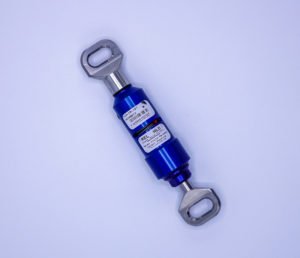
Drone parachutes have a major benefit in commercial operations. As an extra level of safety in case of an unexpected failure, drone parachute systems have been instrumental in helping commercial operators receive waivers for flight over people. For commercial or scientific flights using expensive airframes and sometimes even more expensive sensors, a drone parachute can mitigate payload loss or damage.
While a seemingly simple device, the ROPR is actually a sophisticated solution. “In order to work reliably, the ROPR has an internal hold timer that assures the parachute will not be released early after initial deployment due to opening bounce or other deployment shocks. The hold timer locks the device while the parachute is opening and unstable,” says the release. “After being under chute in steady descent for between 4 to 6 seconds, the hold timer rotates to allow for release only after landing – when the pull of the parachute unloads. Under no conditions can the parachute release early as long as the main parachute is open and the ROPR remains under load.”
Fruity Chutes doesn’t limit their solution to drones: they can also be used for rockets and other unmanned systems. “Additional uses include, but are not limited to, water drop payloads such as sonobuoys, where the payload needs to detach after splashdown, and airdrop cargo systems,” the release points out. “For people undergoing ASTM flight testing, the ROPR can minimize damage from multiple test flights where wind conditions can damage the drone being tested.”
“I’ve personally seen, after landing in windy conditions, valuable high-power rockets get dragged for miles and take on heavy damage,” said Gene Engelgau, CEO of Fruity Chutes. “One time, we had to drive to chase a rocket being dragged, and my son had to tackle the rocket to stop it. I designed the Raven device with the intention of helping others prevent this high-stress situation.”

Miriam McNabb is the Editor-in-Chief of DRONELIFE and CEO of JobForDrones, a professional drone services marketplace, and a fascinated observer of the emerging drone industry and the regulatory environment for drones. Miriam has penned over 3,000 articles focused on the commercial drone space and is an international speaker and recognized figure in the industry. Miriam has a degree from the University of Chicago and over 20 years of experience in high tech sales and marketing for new technologies.
For drone industry consulting or writing, Email Miriam.
TWITTER:@spaldingbarker
Subscribe to DroneLife here.